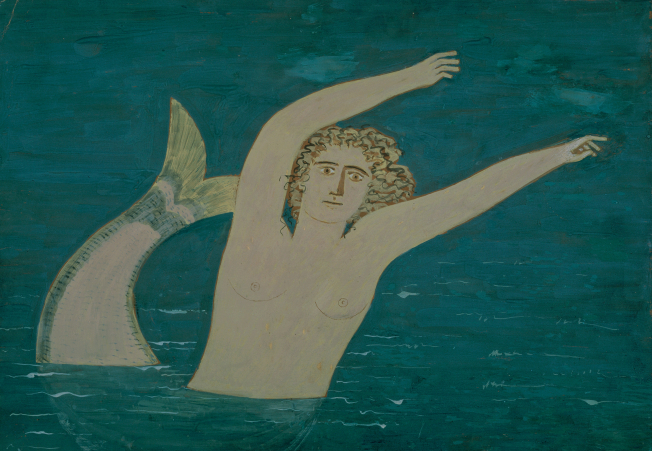Mermaid, c.1972

Mermaid, although is not dated, we can say with virtual certainty that it was produced around 1972, since it shares characteristics with works which date from that period, particularly in fresco. A basic quality of these works is the weightlessness of the depiction, with light chiaroscuro on the body or the face. The hair is depicted by rapid, free brush-strokes, while the dilute paint lends transparency and fluidity to the composition. Whether his painting belongs within his usual subject-matter, or whether he is portraying landscapes from his beloved Hydra, or mermaids, ships, or pitchers, everywhere the same abstractive approach, both in the use of the line in the design and in the sparing placing of the paint without tonal gradations, predominates.




